Swami Dhyan Giten's Blog, page 49
August 28, 2012
Giten on Trust
Giten in blissful communion without barrier
with Toshen, a beloved friend since many lives
What is trust in life? Trust is an attitude to life. It means to open our heart to life. It means to travel with an open heart into the unknown.
It means to dare to take the jump into the unknown.
It means to let go of our separate ideas, attitudes and expectations and allow life to guide us.
It means to live in a deep harmony with life, without expecting life to fit with our ideas and expectations.
Trust in life means to realise that life is not an enemy, but a friend. It means to realise that Existence loves us. It means to realise that life supports us.
It means to realise that we are already one with life.
When we learn to meditate, we develop a trust to ourselves and to life. This trust helps us to be relaxed with whatever happens. This
trust helps us to come in deeper contact with our inner being, with the source of life within ourselves.
When we learn to meditate, we develop a trust to ourselves and to life. This trust helps us to be relaxed with whatever happens. This trust helps us to come in deeper contact with our inner being, with the source of life within ourselves.
Our heart is the door to trust life. Opening our heart means to learn to invite the support from Existence.
Existence tries in every moment to provide us with exactly what we need with more lovingness, ingenuity and creativity that we ever can imagine.
Trust in life is to shift perspective from struggling and fighting to get things our way to listening to what the Whole wants.
Even if its is chaos in our life, we can still say ”yes” and accept the chaos. We can create a conscious relation to the chaos, which allows us to even enjoy the chaos.
Swami Dhyan Giten
From the book ”The Silent Whisperings of the Heart –
An Introduction to Giten’s Approach to Life” (Lulu.com, 2012)
August 2, 2012
Intuition – Trusting Your Self
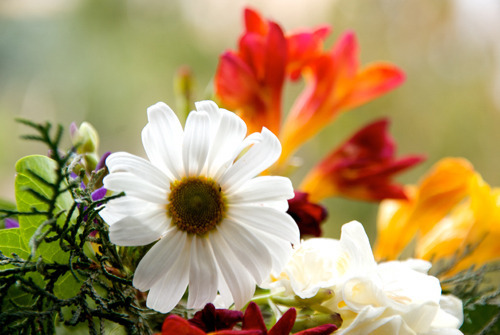
Intuition – Trusting Your Self
An excerpt from, Swami Dhyan Giten’s book, The Silent Whisperings of the Heart (Lulu.com, 2012)
Intuition means to listen to the silent whisperings of our own heart.
Intuition is our inner teacher, our inner source of love, truth and wisdom, in life.
Intuition basically means to develop a deeper trust in ourselves. Intuition means to develop a deeper trust in our heart and inner being.
Intuition is basically a function of our heart and the heart is the door to develop our intuition.
Intuition is a yes to life. Intuition means to develop a trust to life. Intuition means to learn to listen
to life. When we allow ourselves to follow the silent whisperings of our heart, the fragrance of love arises.
Life is like playing “hide the key” with God. God has hidden the key and now it is up to us to find the key again. It also takes us a while to realize the key is hidden in our own heart. Our heart is
the door to allow life to guide us. Our heart is the door to say yes to life. Our heart is the door to
surrender to life.
Intuition means to follow the silent whispers of the inner in a basic “yes” to life.
Life is very simple. In each moment, we have the opportunity to say “yes” or “no”, to listen to our
intuition, to listen to our true inner voice, the existential voice within ourselves. When we say
“yes”, we have contact with existence and we receive nourishment, love, joy, support and
inspiration. When we say “no”, we create a separation from life and begin to create dreams and
expectations of how life should be. We begin to live in the memories of the past and in the
fantasies of the future – as if any other time than here and now really could make us happy and
satisfied.
Life is our teacher. Life communicates with us all the time and it is a lesson to see how life
continuously leads us to the people we need to meet, to the situations we need to experience, and
to the places we need to be. There has never been any real reason to worry since all small,
individual rivers are already on their way to the ocean, to the whole.
Intuition means to develop a trust in ourselves. Intuition means to know from within ourselves.
Intuition is our true inner voice, our inner teacher.
Intuition is about being present and making creative decisions.
Through learning to listen to our own intuition, it develops to a constantly available inner source
of love, truth and wisdom. We can close our eyes, go within, and always receive the right
guidance.
Intuition is the art of the moment. Intuition is always in the moment, in the here and now.
Intuition means to develop a trust in ourselves, a trust in our own joy, intelligence and creativity,
a trust in our own individuality.
The intellect gives insight, logic and understanding, the heart gives joy, acceptance, trust,
intuition compassion, friendship, playfulness, humour, creativity and a sense of oneness in love
and the inner being gives silence, a rest in ourselves, meditation and a sense of belongingness
with life.
The human heart is a healer, which heals both others and ourselves. The human heart operates
from two premises: “I Am Responsible” and “Only Love Works”.
Love is what creates the freedom and relaxation to be who we really are. The greatest gift we can
give to another person is our love.
In the depth of our heart, we already know that we are perfect as we are. In the depth of our inner
being, we already know that life is perfect as it is.
Fear and hate create separation, love and joy create belongingness and wholeness.
Acceptance means to learn to love and respect ourselves as we are. Acceptance is to love and
embrace everything that we find within ourselves like a mother embraces her child.
When we stop judging others and ourselves, our heart begins to open.
Acceptance means to bring everything from inside ourselves out in the light.
Everything we give love and attention to grows and develops. Meditation is the way to develop
the inner clarity, which is the base to develop our intuition.
Intuition is a capacity of our heart. Our heart is the door to existence to guide us, instead of being
directed by our ideas, desires and expectations. Since the days of Aristotle, we have been taught
that logic is the only way to reach a solution. But while logic works in a step-by-step process to
reach a solution, intuition simply takes a quantum leap to a solution without any intermediate
steps.
To see life from the perspective of intuition is to have vision. To see life from the perspective of
intuition is to see life from the perspective of wholeness. It is to understand that life is basically
one and that we are part of life. While the intellect can only see the details, intuition sees the
whole. To see life from the perspective of intuition is like looking at life from the summit of the
mountain, whereas seeing life from the perspective of intellect is like looking at life from the foot
of the mountain. Through learning to listen to our intuition, we learn to be in contact with the
Whole.
We all have the same capacity to develop our intuition. Meditation and love are the nourishment
to develop our intuition. People with a quality of heart are often intuitive.
Intuition is the art of the moment. While the intellect always moves like a pendulum of a clock
between the memories of the past and the fantasies of the future, intuition is always in the
moment, always in the here and now. The more we develop our inner being, the inner source of
love and truth, the inner quality of being here and now, the more we also have access to our
intuition.
Intuition is about moving out of our own way. Intuition is about moving out of our limited sense
of “I”. It means moving out of the way of our ideas about how things should be and just be with
what is. It is to be with living the reality of the moment.
Intuition is a trust that if we follow our heart, if we follow our love, joy and truth, the Whole
becomes enriched.
Intuition is already in contact with existence.
Intuition is already in contact with that which is larger than ourselves.
August 1, 2012
Intuition – Trusting Your Self. Exercises to develop trust in Your Self
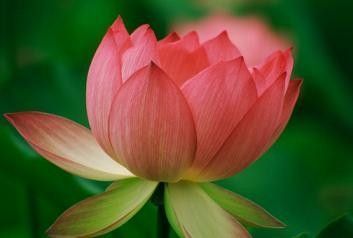
An excerpt from Swami Dhyan Giten’s book “Presence – Working from Within. The Psychology of Being” (Lulu.com, 2012)
Exercise 1: From intellect to intuition
This is an exercise, which aims on learning to distinguish between intellect and intuition. Take as a continuous meditation to learn to distinguish between the intellect, between our ideas of how things should be, and intuition, our true inner voice, to learn to distinguish between the false and the real, between the true and the artificial.
Exercise 2: Learning to distinguish between listening to the intuition and to be directed by outer forces
This is an exercise that aims at learning to be aware when you allow yourselves to be directed by outer forces and when you allow yourself to listen to your intuition. Be continuously aware in different situations between when you allow yourself to be directed by other people’s ideas, opinions and expectations and when you allow yourself to be guided from within by listening to your own intuition, to your own true inner voice, to your own inner source of love, truth and wisdom, to Existence within yourself.
Exercise 3: To invite guidance
When you are in a cross road in life or in situations when you need guidance, take as a conscious exercise to ask you intuition a question and ask for guidance and clarity. The answer may not come directly, but you will always receive an answer.
Exercise 4: Make a painting of intuition
This meditation aims at painting a picture in colour and form of your experience of intuition.
If you do this meditation together with a partner, you can discuss your painting with your partner.
Exercise 5: Listen to your heart
To continuously be in contact with your heart and with your intuition, you can ask the following four questions in different situations for example when you have to make a choice or when you are going to take a new step:
1. Will I love myself if I do this for example if I take this new step, if I chose this or if I say this.
2. Will I feel courageous?
3. Is it beautiful for me?
4. Can it be simplified in any way?
Exercise 6: Intuition – taking creative decisions.
Intuition is about taking creative decisions. Take as an exercise to take a conscious decision during a whole day to allow your intuition, your inner source of love, trust and wisdom, to guide you through the day to take creative decisions.
Exercise 7: Making a energy reading of a partners heart in the form of a flower
This is an exercise in intuition and healing, where you sit facing a partner and make an energy reading of the partner’s heart in the form of a flower.
Begin this exercise by turning your attention within yourself and come in contact with you own heart. When you have come in contact with your own heart, begin to tune in with your partners heart and describe the partner’s heart in the form of a flower. Describe in words what kind of flower it is, the quality of the flower, the colour of the flower and the surroundings in which the flower grows.
Stay continuously in contact with your own heart during this exercise and be aware of how the contact from heart to heart plus the communication through words creates healing. When you and your partner has read each others hearts, take a moment to share how it felt to have your heart read and how the communication from heart to heart crates healing.
Exercise 8: Intuition-journal
To become more aware about how your intuition is developing, take a decision to write an intuition-journal every evening during one month. When you wake up in the morning, remember that this is a new opportunity to develop your intuition. Take a conscious decision in your heart that today you are going to be aware and to trust your intuition during all the activities of the day. Be continuously aware during the day about the difference between being in contact with yourself and your intuition and not being in contact with your intuition.
Be grateful in the evening for everything that has happened during the day, since both positive and negative experiences are teachers on the way to develop intuition. Write an intuition-journal in the evening and write shortly during 10-15 minutes about when you managed and when you did not manage to trust your intuition during the day. Do not judge and evaluate whether you managed or did not manage to trust your intuition, but let the intuition-journal be a way to simply be aware and develop your intuition.
Exercise9: Become friend with a tree
On an unconscious level, trees are already in contact with Existence. With their roots deeply rooted in the earth and with their branches reaching towards the sky, trees have their own innate wisdom.
A meditation exercise you can do to develop your intuition is to become friend with a tree. Sit under the tree and ask the tree questions and listen within to your own intuition for the answers that you receive.
Exercise 10: To see what the Whole wants
This is an exercise to let go and to see what the Whole wants in a certain issue. When you have compared the pros and cons on a certain issue, then leave the issue to the intuition, to the inner source of love, truth and wisdom, to the voice of Existence within, and see what the Whole wants concerning this issue.
Sometimes Existence responds immediately and sometimes it takes some time before Existence is ready to respond. But you will always receive an answer in exactly the right time. Sometimes I have struggled to get something to happen, but it was first when I let go that it happened by itself. Sometimes things are not meant to happen either. It is a question of timing. It is a question of when the time is ripe. It is a question of trust to the Whole.
July 29, 2012
Giten on being One with the Whole

“I was 9 years old when I had my first glimpse of wholeness. It was early Christmas morning and I was standing in my pajamas in the living room and looked out of the large windows. Outside the white snow flakes silently singled down toward a snowclad landscape. Suddenly I was filled with a feeling of being one with the slowly dancing snowflakes, one with the silent landscape.
I did not understand then that this was my first taste of meditation, but it created a deep thirst and a longing in my heart to return to this natural and effortless experience of being one with the Whole.”
GITEN
GITEN ON DIVINE UNSATISFACTION
“I remember an insight that taught me much about life. One day I felt that I had everything that I really wanted in life. I had a creative and meaningful work as a therapist and course leader, I had a relationship with a beautiful woman, who I loved and who loved me, I had friend that I trusted and I had money to do what I wanted.
But in spite of all this, I still had a feeling that there was something missing in my life. I was not satisfied. The thirst and longing in my heart was still searching for something more. It made me realize that the deepest pain in my heart was that I was still separated from the Whole and that no outer things or relationships could ease this pain.”
GITEN
from the book The Silent Whisperings of the Heart – An Introduction to Giten’s Approach to Life (Lulu.com, 2012)
GITEN ON ENLIGHTENMENT
“When I did a therapist education in USA 1984, one of the course leaders – who had given personal and spiritual guidance to thousands of seekers of truth from all over the world, and who I consider to be one of the best spiritual therapists in the world – said that I was going to get enlightened, that I would ”disappear into the silence”.
I did not really understand what he meant then, and it was totally absurd for me when other course participants congratulated me afterwards. The thought that I was going to be enlightened was totally absurd for me. For me enlightenment was something that happened to special and chosen persons like Osho, Buddha, Jesus, Lao-Tzu and Krishnamurti. I did not feel either special or chosen. I did not feel worthy of being enlightened.”
GITEN,
from the book Presence – Working from Within. The Psychology of Being (Lulu.com, 2012)
GITEN ON BEING ONE WITH NATURE, ONE WITH THE TREES AND ONE WITH THE PEOPLE
I had a magical day during one Sunday when I walked out in nature. On the outside this day only consisted of taking a walk out in the beautiful sunny weather and cleaning my apartment, but on the inside everything suddenly changed. When I walked out in nature in the sunny weather, a silent explosion suddenly happened within me and my whole perception of reality changed.
In a single moment, everything had changed, although nothing on the outside had really changed. Everything on the outside was exactly as before, but my way of seeing had changed. The difference was that before I did not see and now I could see. My eyes were open. Suddenly I was one with everything, one with the stones, one with the trees and one with the people that I meet on my walk.
My heart danced with joy together with a feeling of: ”I am God”. Not that I am the creator of everything, but that I am part of the Whole, part of the divine. It felt like coming home, that Existence is my home. I also saw that even if the people that I meet did not understand that they are a part of the Whole, they still are a part of the Whole. I felt the waves of Existence in my own heart and being and I felt like a small wave in a great ocean. It gave a taste of the eternal, a taste of the limitless and boundless source of creativity. In just a few moments, I learnt more than during 20 years in university.
Wisdom is basically the understanding that we all are part of the Whole. We are all small rivers moving towards the ocean. I laughed at the fact that enlightenment is really our innate birthright, and that small children already live in this mystical unity with the Whole.”
GITEN
from the book The Silent Whisperings of the Heart (Lulu.com, 2012)
July 23, 2012
Giten on Intuition
[image error]
To see life from the perspective of intuition is to have vision. To see life from the perspective of intuition is to see life from the perspective of wholeness. It is to understand that life is basically one and that we are part of life. While the intellect can only see the details, intuition sees the whole. To see life from the perspective of intuition is like looking at life from the summit of the mountain, whereas seeing life only from the perspective of intellect is like looking at life from the foot of the mountain. Through learning to listen to our intuition, we learn to be in contact with the Whole.
Swami Dhyan Giten
from the book Presence – Working from Within. The Psychology of Being (Lulu.com, 2012)
Giten presents 2012 Swedish Eurovision song contest winner Loreen with his best-selling book in Swedish, “Song of Meditation – About Meditation, Relationships and Spiritual Creativity”
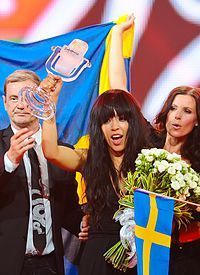
Loreen’s mentor Måns Zelmerlöw, singer and CEO for music company Mohito, said recently in an interview that Loreen was stressed due to intensive international touring after winning the 2012 Eurovision song contest and that she needed to meditate - ”as she use to do”.
Giten works with therapists, consultants and musicians in his individual therapy- and meditation programes, and when he read this he presented Loreen with his best-selling book in Swedish, “Song of Meditation – About Meditation, Relationships and Spiritual Creativity”, which is about the relationship between meditation, relationships and creativity.
“How kind”, Louise Ahnmé commented, responsible for brand- and celebrity endorsement at the music company Mohito, where Loreen is signed as artist.
SONG OF MEDITATION
- ABOUT MEDITATION, RELATIONSHIPS
AND SPIRITUAL CREATIVITY
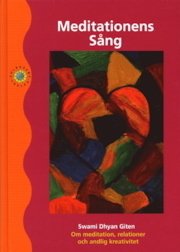
Spiritual teacher and author
Swami Dhyan Giten’s best-selling book
“Reading Giten’s book Song of Meditation was a profound experience for me.”
Lisbet Gemzell, professor, The Swedish Teachers Academy and The Swedish Actors’s Academy
“This book changed my whole perspective of life. ”
Ann-Sofie Segerstedt, Stockholm, Sweden
A totally wonderful book. This is a book for life, which I will read many times.”
Monica Samuelsson, Linkoping, Sweden
“Giten is a loving transmitter of much wisdom.”
Lena Nikunen, therapist, Gothenburg, Sweden
“Giten is a really beautiful soul”
Swami Anand Arun, Osho Tapoban Meditation Center, Nepal
“I value Giten’s work and know how much good he spreads to many people.”
Lena Kristina Tuulse, psychologist, pioneer in humanistic psychology
and founder of Waxthuset, one of the oldest and largest places
for personal growth in Sweden
“An unusually rich and balanced guidance in the art of living”
The Swedish Library Service
“Excellent”.
Devadas, teacher, Delsbo, Sweden
ORDER
Meditationens Sång is available all over Scandinavia.
Swedish title: Meditationens Sång
Buy or order the book:
Sweden
Adlibris: www.adlibris.se
Norway
Capris: www.capris.no
Denmark
Saxo: www.saxo.dk
Finland
Akademiska bokhandeln: www.akateeminenkirjakauppa.fi
July 19, 2012
Send eCards to a friend with Giten’s award winning meditative art
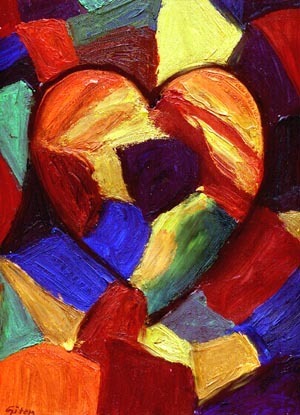
Swami Dhyan Giten, THE EXISTENTIAL HEARTBEAT
Gitens Meditative Art flowers out of meditation.
You will be able to feel the fire of awareness and
the fragrance of love through his paintings.
This is art that can nourish your inner being and
open the door to your inner source of love,
meditation and beauty.
Giten’s meditative art nominated for the international art exhibition, The Florence Biennale in Italy, 2005
Giten’s meditative art have been nominated for the international art exhibition, The Florence Biennale in Italy, which is arranged in cooperation with The United Nations. The Biennale will take place from the 3rd to the 11th of December, 2005, in the exhibition space of the historic Fortezza da Basso in Florence.
“Meditative art is born out of the insight that life is already one. In the depth of our heart, we already know that we are perfect as we are. In the depth of our inner being, we already know that life is perfect as it is.”, says Giten.
Send eCard with Giten’s Meditative Art
http://www.123greetings.com/profile/giten/
July 18, 2012
Giten quoted together with Eckhart Tolle, Mooji, Nietzsche, Rumi, Ram Dass and Chopra on Pinterest
[image error]
Life is our teacher. Life communicates with us all the time and it is a lesson to see how life continuously has led me to the people I need to met, to the situations I need to experience, and to the places I need to be. There has never been any real reason to worry since all small individual rivers are already on their way to the ocean, to the Whole. It is not about swimming, it is about relaxing and to float with the river in a basic trust that life already leads towards the sea of consciousness, towards the Whole.
Swami Dhyan Giten
Source:
http://pinterest.com/vjvbdc/be/
July 11, 2012
Yes and No to Life – The Three Positions to Relate to Life
 What choices do we have in relating to life? What are the three positions to relate to life? Imagine life like a fast-flowing river, where you can see the white foam on top of the waves. In this fast flowing river, you have three choices.
What choices do we have in relating to life? What are the three positions to relate to life? Imagine life like a fast-flowing river, where you can see the white foam on top of the waves. In this fast flowing river, you have three choices.The first alternative is trying to swim upstream in opposition to the flow of the river. The second alternative is trying to hold on to a static position in the river by grabbing on to a branch of a tree, which hangs down over the river. The third alternative is simply relaxing and allowing us to be carried by the flow of the river wherever it takes us.
The first alternative is a “no”-position in relation to life. The second alternative is an “I want…”-position in relation to life. The third alternative is a “yes”-position to life.
These choices mirror our basic relationship to life and bring up the fundamental question if life is a friend or an enemy, to say “yes” or “no” to life, to cooperate or fight with life.
1. The “No”-position
The “no”-position means to relate to life from a “no”-attitude. The “no”-attitude means to relate to life from our ego, from our separate ideas, desires, attitudes, dreams, illusions, ambitions, expectations and concepts about how we should be, about how other people should be and about how life should be.
The “no”-position is a defense and a separation towards life. The “no”-position means to resist the continuous flow and change of life. It is to separate ourselves from the joy and flow of life. The “no”-position is like closing the door from within so that life can not touch us.
The separate ego receives its strength and maintains its control through fight, judgments and comparison in terms of better or worse and higher or lower.
One of my course participants in a one-week course on the topic, “Yes and No to Life: Meditation, Relationships and Creativity,” exclaimed surprised when we did practical exercises about the “no”-attitude to life: “This is exactly how I have always related to life!” she said. She had not been aware that this had been her automatic way to react to herself, to other people and to life as a whole.
2. “I want”- position
The “I want”-position is an aspect of the “no”-position. It means that we only open our inner window towards life when there is something special that we want from life. In comparison with the “yes”-position – where we are open and available for life to give us what we really need – the “I want”-position is a state of desires, wishes, expectations and ambitions.
When life does not give us what we think that we need, we close our inner window with a disappointed and disillusioned feeling that life does not give us what we need. We close our inner window again without being open for the possibility that life may not give us what we think that we need, but that life gives us what we really need.
During Christmas 2008 when I wrote this article, a beloved friend of mine phoned me on Christmas Day. She told me that her boyfriend for many years had died during Christmas, and she wondered if we could meet and talk. Death is one of the most mysterious phenomenon in life that shatters all our ideas, desires and expectations. Death is basically a question of perspective: to see death from the perspective of the personality or to see death from the perspective of the soul. Death never seems to come at the right time and it always seems to come too early, but people die at the precise right time when the soul has learned what it came to learn and is ready to leave the body. After the phone call with my friend, I opened a healing channel with her and sent her love, understanding and nourishment until we met.
3. The “yes”-position
Our heart is the door to trust life. Our heart is the door to surrender to life. Our heart is the door to allow life to guide us. Opening our heart means to learn to say “yes” to life. It means to allow us to receive the support from Existence, which gives us exactly what we need in exactly the right moment with more creativity and ingenuity than we can ever imagine.
The “yes”-position means to relate to life through our inner being, through our authentic self, through the source of life within ourselves. The inner being is an inner space, an inner emptiness, where we can allow life to pass unhindered through us. The inner being is openness and availability to life.
I discussed the concept of Yes and No to Life with my precious friend of many years, Eric Rolf, an international course leader and personal consultant to John Lennon, Yoko Ono, Paul Simon and Carlos Santana. His simple and true comment was: “I usually tend to say yes to what life offers.”
The basic reason to all our problems and worry is our desperate effort to try to fit life with our own ideas, ambitions and expectations. The “yes”-position is a deep acceptance of the reality of the moment as it is, without wish that the moment should be different than it is and without will to change the moment in any way.
The “yes”-position means to accept and include both joy and sorrow, both light and darkness, both negative and positive experiences and both life and death. It is to be and relate to life in a deep harmony without expecting life to fit with our own ideas, expectations and ambitions.
The “yes”-position means that the part surrenders to the Whole in love, joy, acceptance and trust like the water drop surrenders to the ocean.
Exercise 1 – Describe the “yes” and “no”-quality in one word. Take as a meditation to describe your own unique “yes” and “no”-quality with one single word. Begin this exercise by closing your eyes, turn your attention within yourself, and listen within to what words that your heart and intuition would like to describe your own “yes” and “no”-quality. Let these words come to you, without trying to force them. My own experience from courses is that people describe their own “yes” and “no”-quality in very different ways. To describe our own “yes”-quality in one word is also a way of describing the quality of our own unique and authentic inner being.
Exercise 2. Yes and No to Life – Take as meditation to be continuously aware if you come from a “yes” or “no”-quality when you relate to yourself, to other people, to creativity and to life itself. Turn your attention within, and ask yourself the question: “Do I act from a “yes” or “no”-quality in this moment?” Be also aware of the difference in the sense of joy and inner satisfaction that these two ways of relating to life create.
Giten
July 4, 2012
MotivateUs shares Giten’s insight on Love

Motivation specialist and editor of Motivateus.com Marlene Blaszczyk writes to Giten: “Giten, So long ago we first met through email, and I have followed your work since then. What a wonderful spirit you are, bright, light and so full of love.
Our paths crossed for a reason – for me to learn to love more, for you to love another. Today I am sharing your excerpt from your book in the hopes that one person, somewhere at sometime will read it and awaken to hear their heart say – love, not hate is what you and the world needs.
God bless you Giten, and thank you for coming into my life. May we know each other forever.”
Love and blessings,
Marlene
Read the whole article at:
http://www.motivateus.com/stories/giten-on-love.htm



